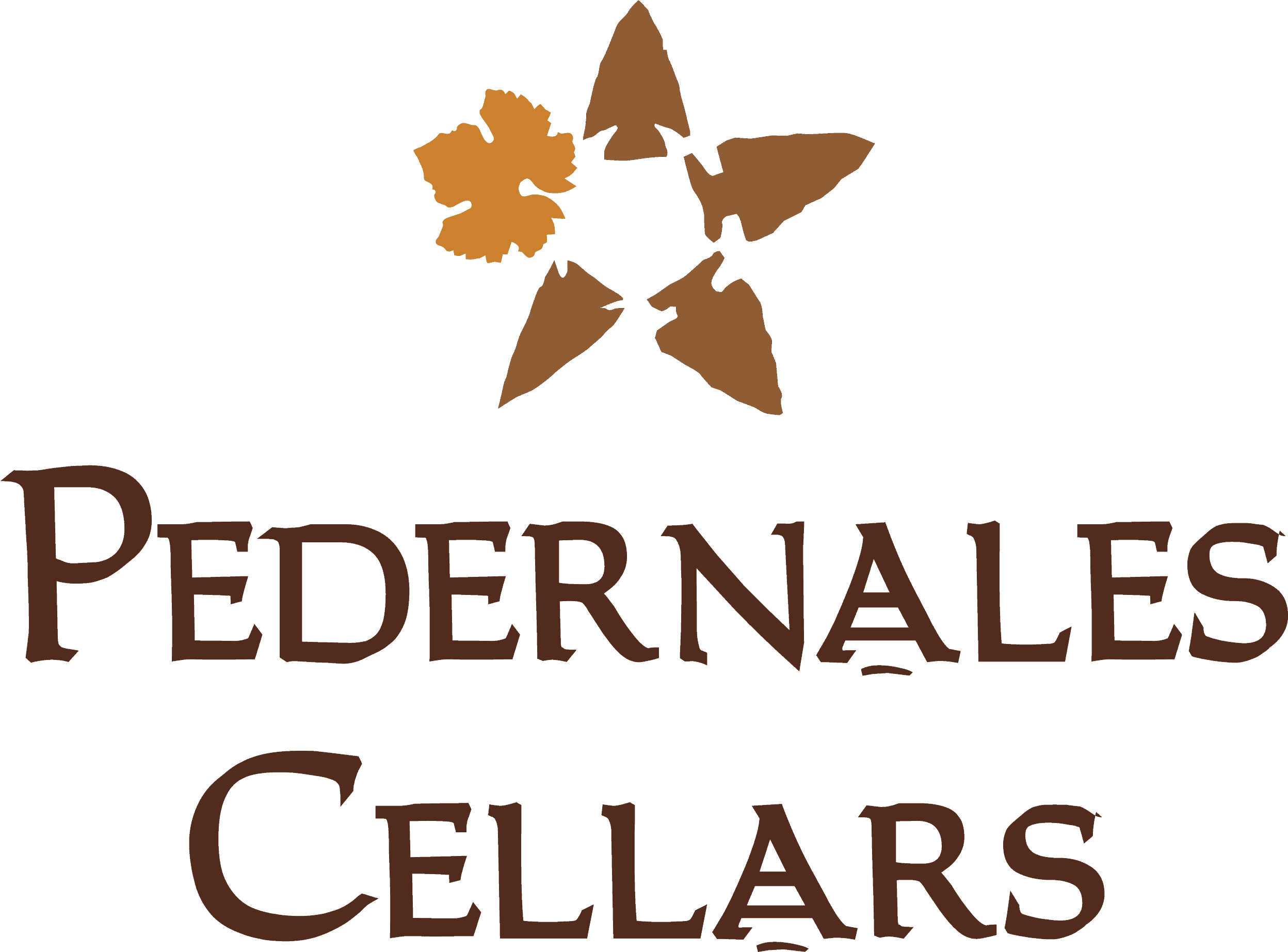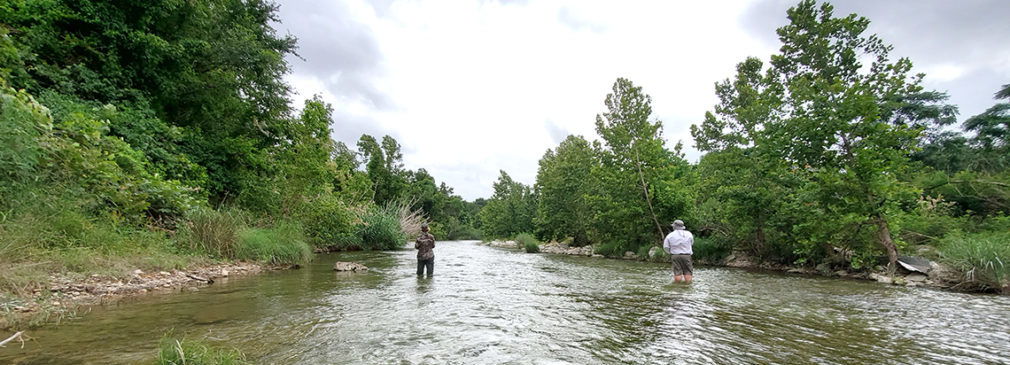
Share
Anyone who knows Aaron Reed knows his favorite thing to do when he’s not at work driving his tugboat is to get knee-deep in a stream.
This Army veteran and award-winning outdoor writer likes nothing better than to hone his fly fishing skills in a stream somewhere around Austin, often with his wife and one or more of his three boys. The Texas Gulf coast native, who is a founding member of the Texas Streams Coalition, splits his time between the coast and his home near the banks of the San Gabriel River in Georgetown, Texas.
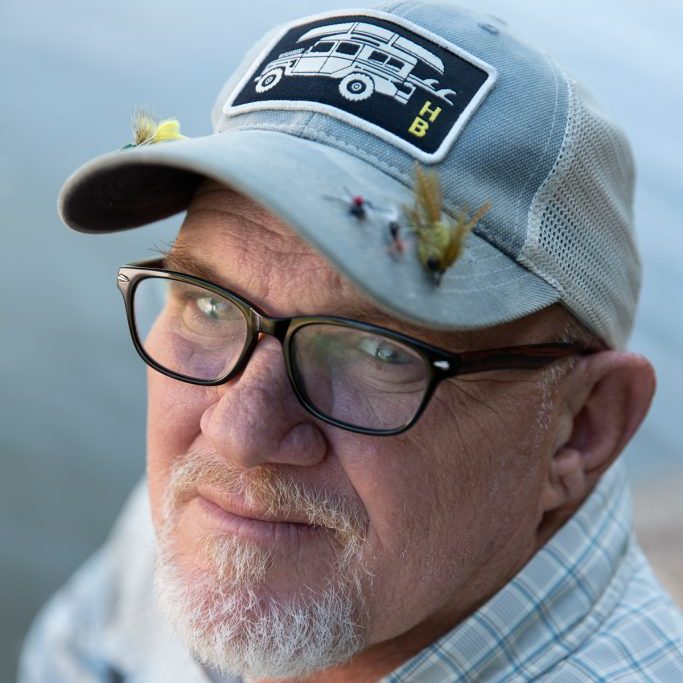
Photo Erich Schlegel
We chatted recently with Reed to get the back story on his book, “Fly Fishing Austin & Central Texas,” how he got started with fly fishing and more.
Who introduced you to fly fishing?
I don’t think there was one person who handed me a fly rod and said, “Try this.” I think I just gradually became aware of fly fishing on the periphery of a larger saltwater fishing scene in Texas back in the 1980s or 1990s. Steve Hall, an FFI-certified casting instructor and colleague at TPWD gave me my first formal lesson much later.
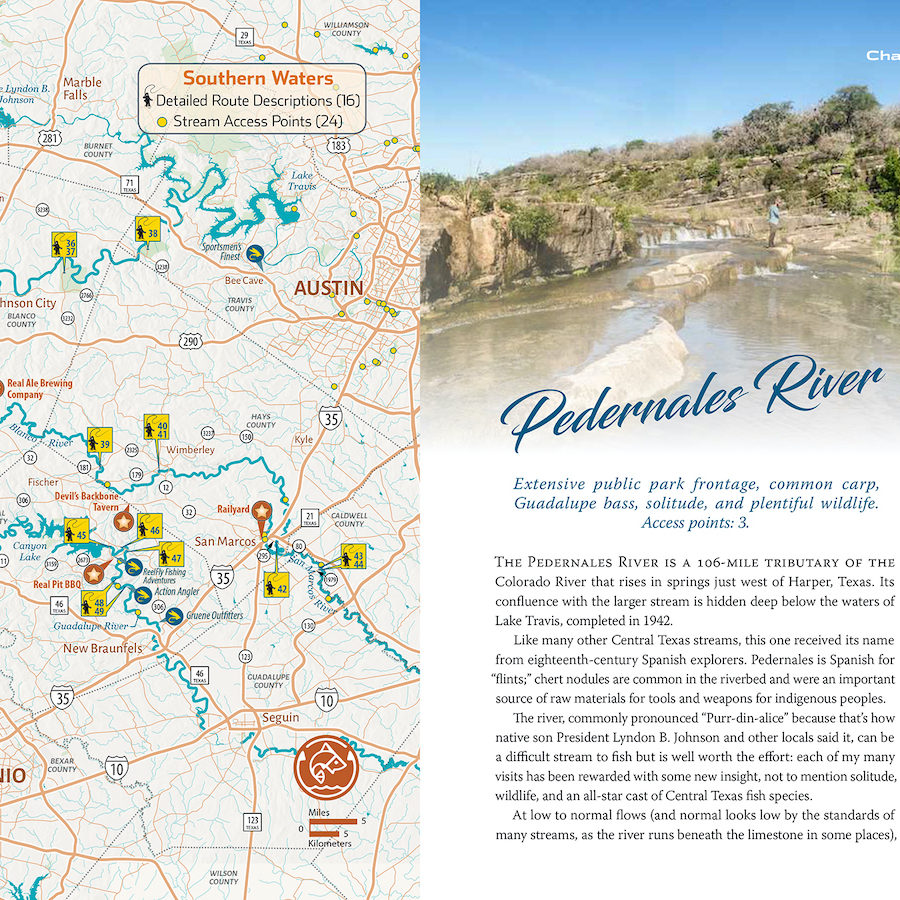
Were you worried about giving up GPS coordinates for some of your favorite honey holes for the book?
I wasn’t worried about it, but I may have been alone in that. I did think about it, for sure. It’s a subject outdoor writers talk about: does encouraging access ruin a stream, or diminish the experience for the locals? I sincerely hope not, and I think there is a good argument that most Central Texas streams are under-utilized, and all of them would benefit from having more people know and love them. Also, not all the honey holes are in the book. If people find them on their own, or put in the work to get to some of the more remote spots I didn’t write about, great! They earned them.
If there’s no obvious fly choice to start fishing with based on conditions and location, what is your first choice for Central Texas creeks and rivers?
Unless I’m seeing just a ton of activity on the surface, I’m probably going to start with an olive Carp-it Bomb in size 8. It’s a good dragonfly nymph imitation and also is probably mistaken for a crawfish. So you are covering two of the major food sources in our streams. It can be crawled along the bottom, jig headed like an emerger, and also fished as a streamer. Nearly everything in the river will take a swipe at it, sooner or later. Plus, it’s a local design by my friend Matt Bennett, who is a mad genius commercial fly tyer.
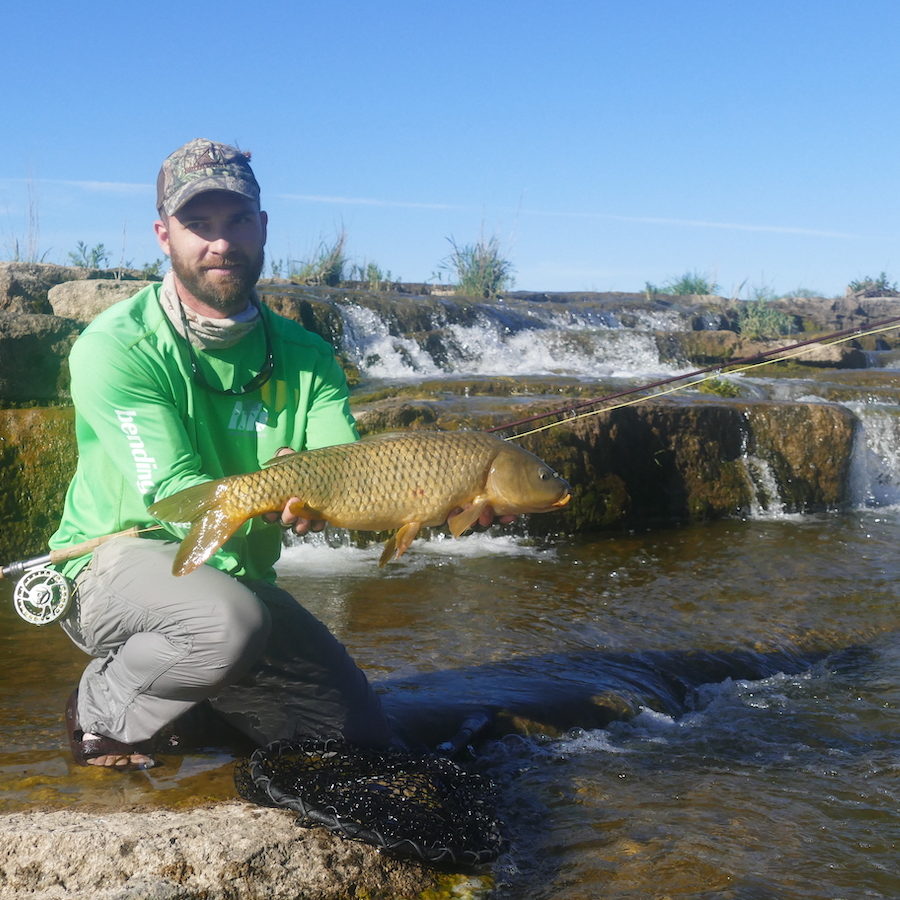
Photo courtesy Fly Fishing Austin/Aaron Reed
What’s your advice to people that have always wanted to try fly fishing but thought the learning curve was too steep or too expensive?
It’s not as hard as it looks, and it doesn’t have to be any more expensive than fishing with conventional gear. I think it is true that fly fishing is a sport that rewards lifelong learning, but anyone can learn enough to go out and start catching fish and having a ball in a couple of hours. Your local fly shop or Orvis store is your friend here — most have free or low-cost introductory courses at least once a month, and newcomers to the sport are welcomed with open arms. There are quality rod and reel options these days to accommodate almost any budget. You can put together a very serviceable outfit for less than $200 — maybe half that if you shop sales or used.
What’s your favorite fish to catch and why?
That’s a tough one. I guess the freshwater fish I get most excited about is a slab Rio Grande cichlid on a 2- or 3-wt rod. We are nearly always sight casting to them, they are picky, they have serious attitude, and — to my eyes, anyway — they are both weird and beautiful.
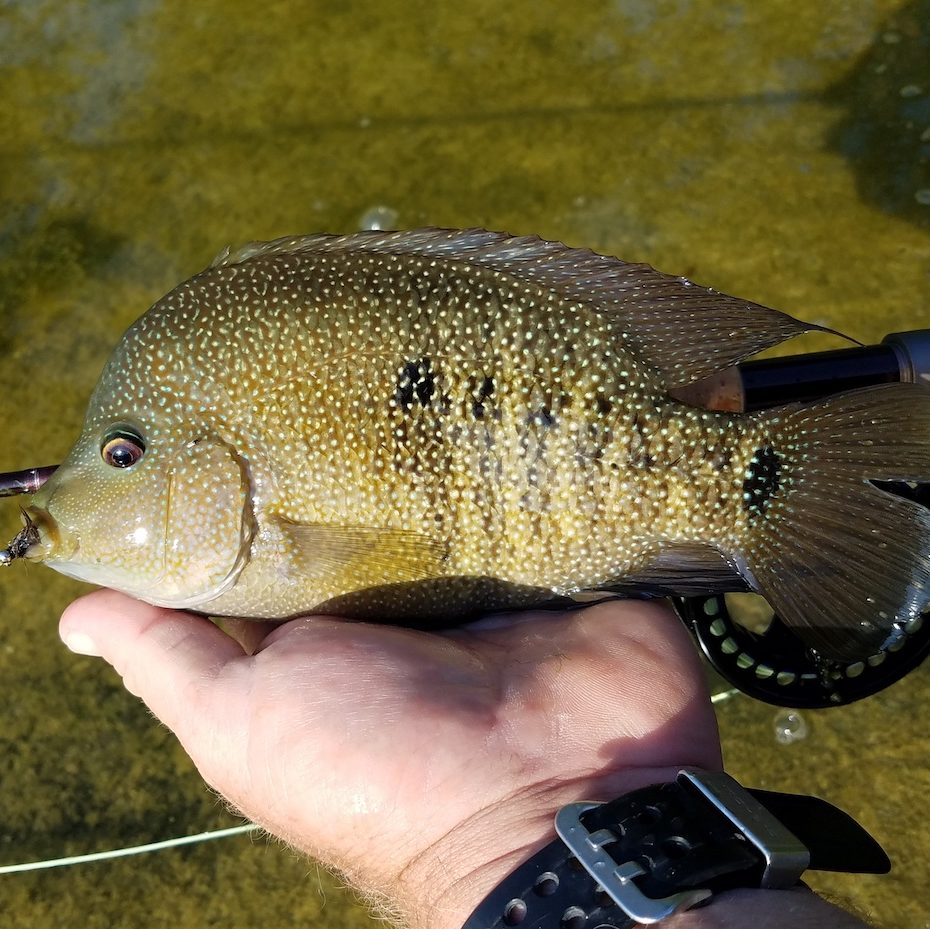
Photo courtesy Fly Fishing Austin/Aaron Reed
What’s your favorite place to fish that’s in your book?
I really like the Lampasas River. It’s sort of off to the side, on the very edge of the Hill Country, and has been largely overlooked by anglers. It is an easy river to wade with a couple of friends and has a really healthy and diverse fishery. There are some really cool, regular mayfly and caddis hatches on that stream, too.
What’s your advice for teaching kids how to fly fish?
Patience! It took me a while to realize that — at first, anyway — fishing trips with young children aren’t going to result in a lot of actual fishing time for the adults. There will be splashing, and swimming, and rock-skipping, and fossil hunting and crawfish catching. If they have a good time, even if they don’t catch fish, they’ll want to get back out on the stream. Something else some of my friends have done that really seems smart and cool is establish fishing trip traditions, whether that is an elaborate snack atop a particular boulder or a milkshake on the way home, or whatever.
Cover photo courtesy Aaron Reed








